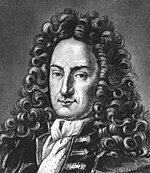Conservation of energy

In physics and chemistry, the law of conservation of energy states that the total energy of an isolated system remains constant; it is said to be conserved over time. This law, first proposed and tested by Émilie du Châtelet, means that energy can neither be created nor destroyed; rather, it can only be transformed or transferred from one form to another. For instance, chemical energy is converted to kinetic energy when a stick of dynamite explodes. If one adds up all forms of energy that were released in the explosion, such as the kinetic energy and potential energy of the pieces, as well as heat and sound, one will get the exact decrease of chemical energy in the combustion of the dynamite. Classically, conservation of energy was distinct from conservation of mass; however, special relativity showed that mass is related to energy and vice versa by E = mc2, and science now takes the view that mass–energy as a whole is conserved. Theoretically, this implies that any object with mass can itself be converted to pure energy, and vice versa, though this is believed to be possible only under the most extreme of physical conditions, such as likely existed in the universe very shortly after the Big Bang or when black holes emit Hawking radiation.
Conservation of energy can be rigorously proven by Noether's theorem as a consequence of continuous time translation symmetry; that is, from the fact that the laws of physics do not change over time.
A consequence of the law of conservation of energy is that a perpetual motion machine of the first kind cannot exist, that is to say, no system without an external energy supply can deliver an unlimited amount of energy to its surroundings. For systems which do not have time translation symmetry, it may not be possible to define conservation of energy. Examples include curved spacetimes in general relativity or time crystals in condensed matter physics.
Comments
Post a Comment